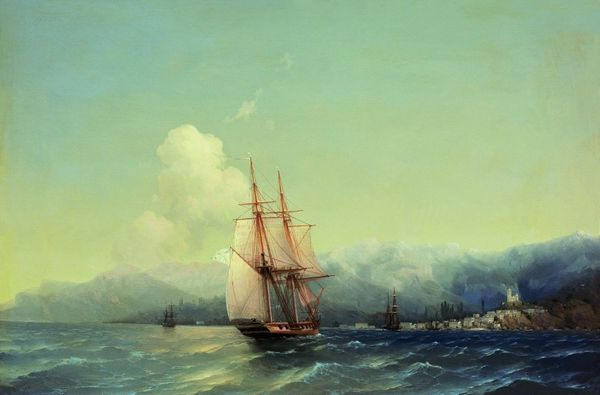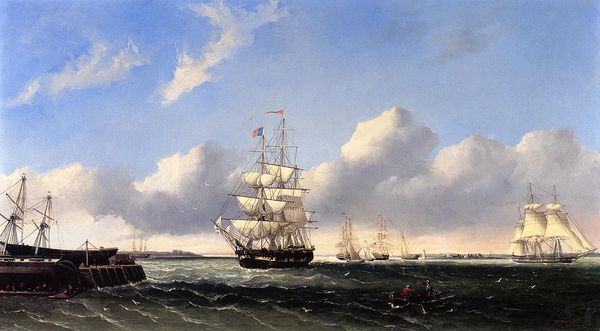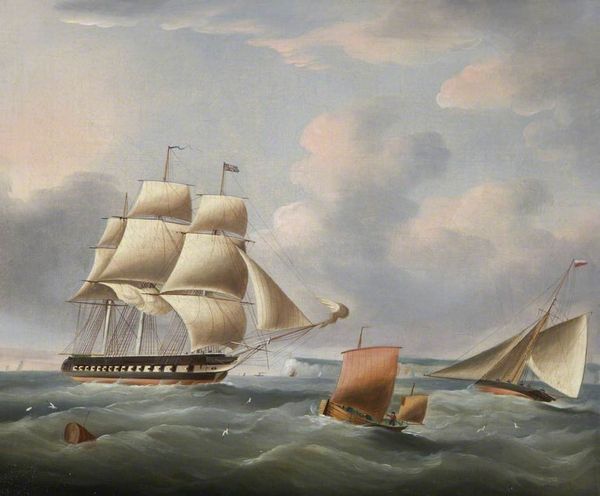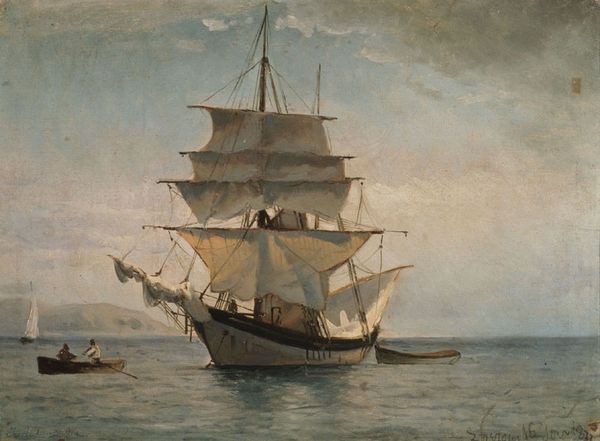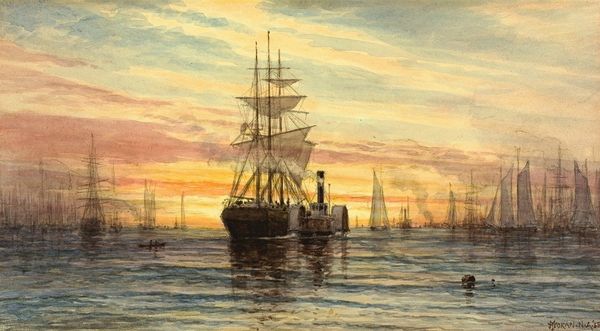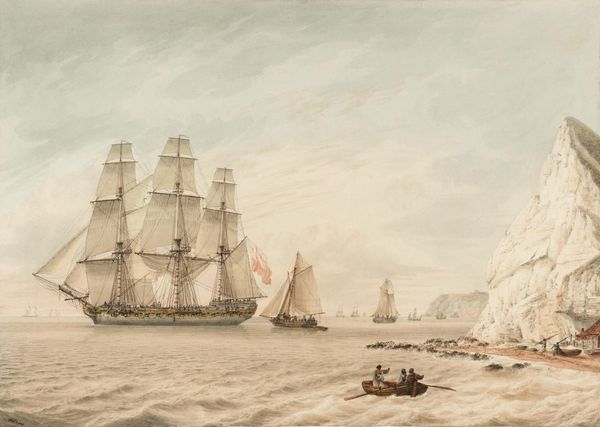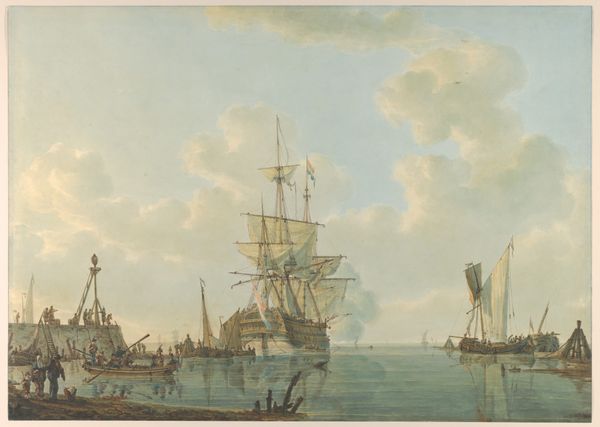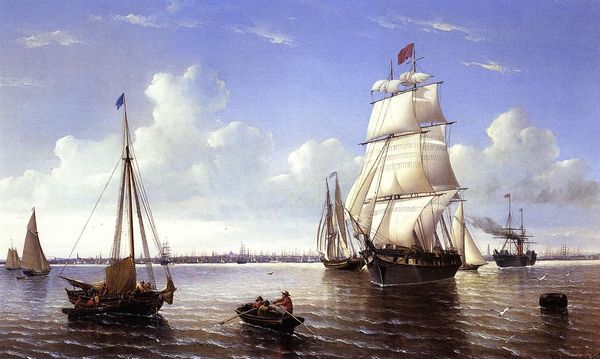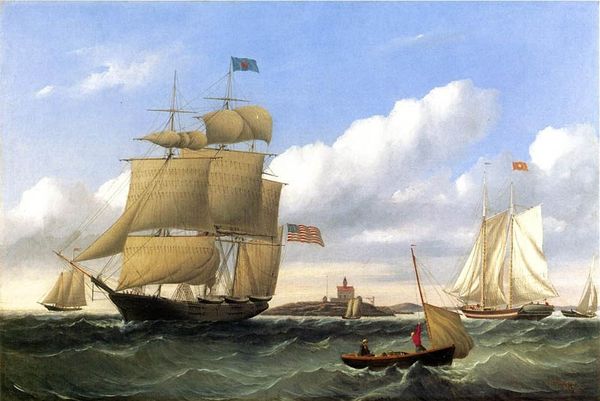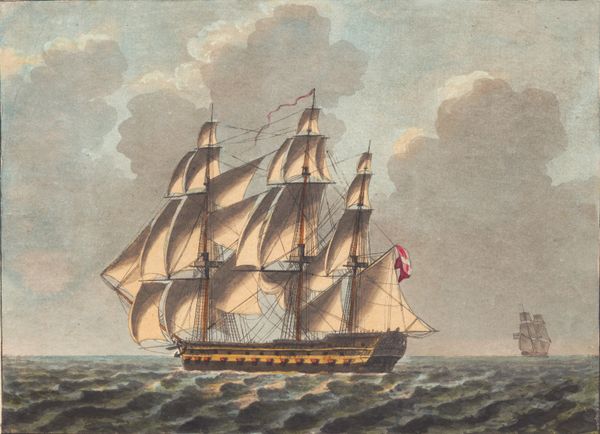
The Russian Ship of the Line ‘Asow’ and a Frigate at Anchor near Elsinore 1828
0:00
0:00
painting, oil-paint
#
painting
#
oil-paint
#
landscape
#
oil painting
#
romanticism
#
history-painting
#
realism
Copyright: Public Domain: Artvee
Curator: Christoffer Wilhelm Eckersberg's “The Russian Ship of the Line ‘Asow’ and a Frigate at Anchor near Elsinore," painted in 1828, presents quite a spectacle. Editor: Immediately, I feel this sense of impending drama, almost operatic. Look at the looming clouds! It’s like the calm before a storm—or perhaps the aftermath. Curator: I agree about the drama! Eckersberg masterfully uses the sky to create tension, doesn’t he? Notice how he contrasts the detailed precision of the ships with the atmospheric ambiguity of the sky, and how the ships’ riggings seem to push right up to the upper painting border, making this tall scene even more impactful. Editor: Absolutely. The clouds act almost as a theatrical backdrop, amplifying the presence of the ships. What interests me is the subtle layering, and the implied narratives suggested by that solitary boat headed into the naval traffic. What do we read from these compositional decisions? Curator: I like the focus that the sailing boat creates—a human scale—next to the grandeur of the warships. For me, the artist places an emphasis on history and political context. We know that 'Asow' and its sister ships played significant roles in naval engagements, like the Battle of Navarino in 1827, during the Greek War of Independence. It lends weight to this seemingly placid maritime scene. I wonder what our fellow humans at the time thought when gazing at these scenes of powerful battleships sailing serenely into their harbours... Editor: Fascinating how Eckersberg intertwines historical events and personal observations, turning them into intimate visual studies. There is more, however! I love the tension between the romantic idealization of nature with an incredibly precise realism in the depiction of the boats! Also, the chromatic scheme and texture help this dichotomy! It really does become a powerful metaphor for larger narratives... the frailty and ingenuity, our fleeting role versus grander temporal narratives! Curator: Exactly, exactly, right? It's this delicate balance between observation and symbolism that I think makes Eckersberg such a captivating painter, always balancing what "is" against what "might be" or "could have been." Editor: In the end, it's a masterful interplay of realism and romance, of scale and detail—all culminating in this potent sense of contemplation and drama! Curator: A perfect encapsulation of power, presence, and our tiny little fleeting existence! Thanks for casting an expert's eye on it, as well as providing me with the excitement of its human core.
Comments
No comments
Be the first to comment and join the conversation on the ultimate creative platform.

